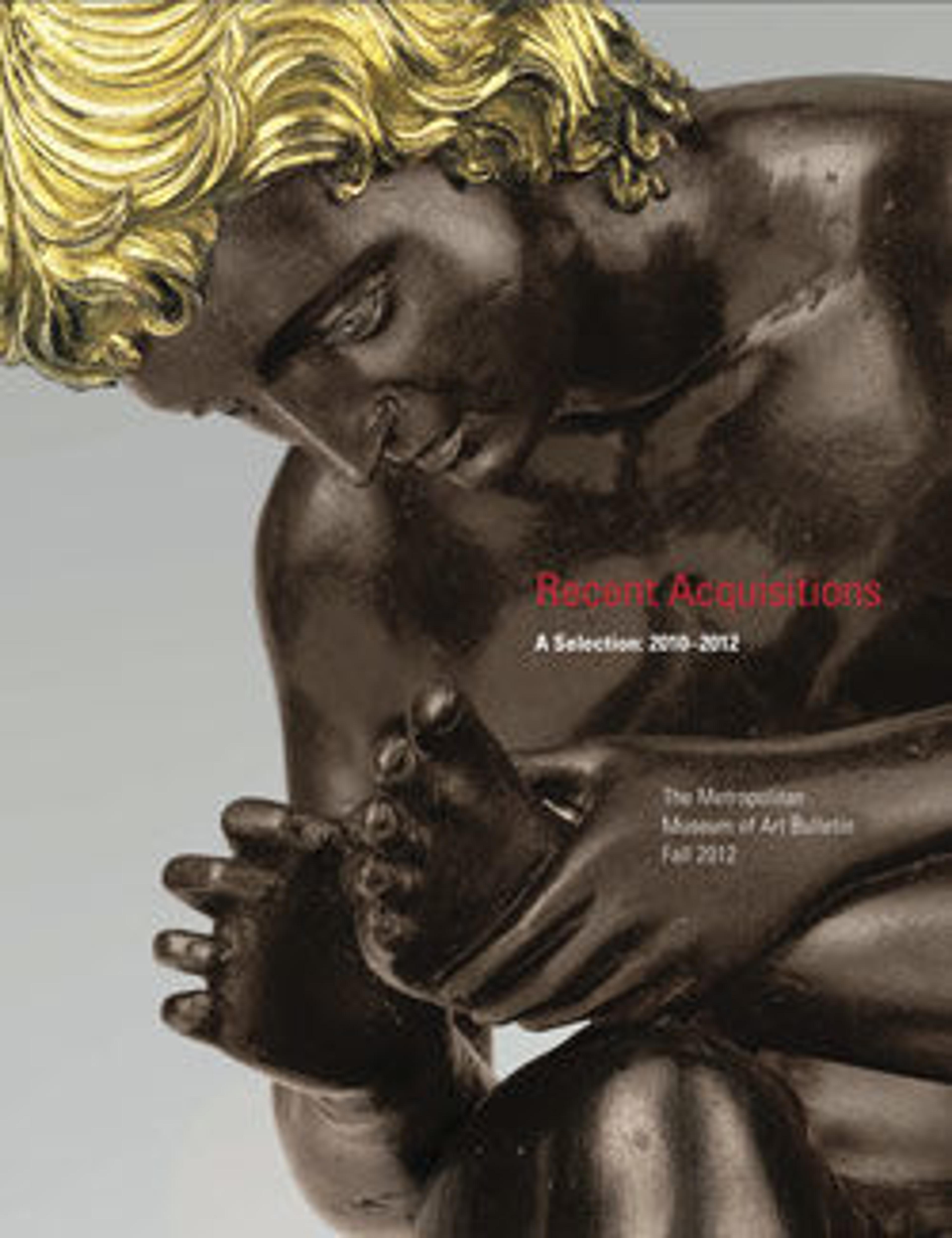Enthroned Virgin
Created in northern Austria along the Danube River, this sculpture is notable for the deep lyrical carving of the drapery. The delicately applied paint on the Virgin’s face is original. The current appearance of much of the surface is due to a past restoration that removed layers of overpaint exposing some areas of gesso and bole, reddish soft clay used as a base for gold leaf. Painted in intense azurite, the blue lining of the Virgin’s mantle, on the other hand, largely retains its original appearance. The Virgin’s hands, which would have held the infant Jesus, were carved separately and have been lost. This sculpture can be seen in the context of the monumental Kefermarkt altarpiece in Upper Austria which is dated about 1490–1497.
Artwork Details
- Title: Enthroned Virgin
- Date: ca. 1490–1500
- Culture: Austrian
- Medium: Limewood with gesso, paint and gilding
- Dimensions: 31 5/8 x 23 1/4 x 9 1/4 in., 31lb. (80.3 x 59.1 x 23.5 cm, 14061.5g)
- Classification: Sculpture-Wood
- Credit Line: The Cloisters Collection, 2010
- Object Number: 2010.446
- Curatorial Department: Medieval Art and The Cloisters
More Artwork
Research Resources
The Met provides unparalleled resources for research and welcomes an international community of students and scholars. The Met's Open Access API is where creators and researchers can connect to the The Met collection. Open Access data and public domain images are available for unrestricted commercial and noncommercial use without permission or fee.
To request images under copyright and other restrictions, please use this Image Request form.
Feedback
We continue to research and examine historical and cultural context for objects in The Met collection. If you have comments or questions about this object record, please complete and submit this form. The Museum looks forward to receiving your comments.
